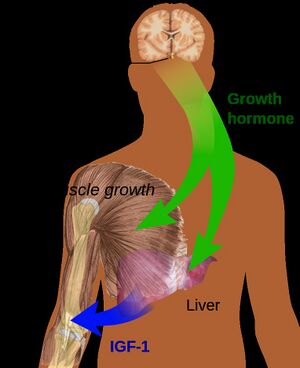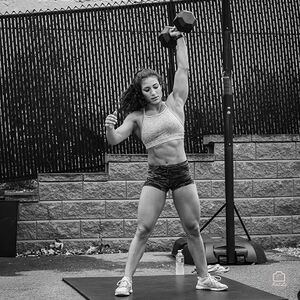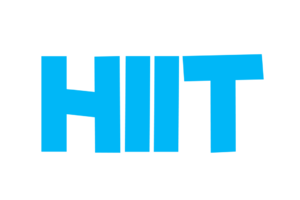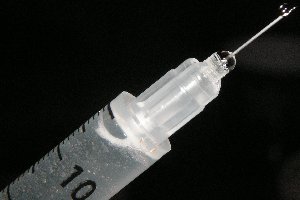Insulin Like Growth Factor-1 (IGF-1)
Original Editor - Lucinda hampton
Top Contributors - Lucinda hampton
Introduction[edit | edit source]
Insulin-like growth factor-1 (IGF-1) is the main mediator of human growth hormone (HGH), playing a key role in promoting cell growth and differentiation in childhood and continuing to have an anabolic effect in adults. IGF-1 is a small peptide that circulates in serum bound to high affinity binding proteins. IGF-1 is part of a wide network of growth factors, receptors and binding proteins involved in mediating cellular proliferation, differentiation and apoptosis.[1][2]
Physiology[edit | edit source]
Insulin-like growth factor I (IGF-I) possesses widespread anabolic and insulin-sensitizing effects, brought about through endocrine (i.e., circulating) as well as paracrine/autocrine (i.e., locally produced) mechanisms.
- Most IGF-1 is secreted by the liver and is transported to other tissues, acting as an endocrine hormone.
- IGF-1 is also secreted by other tissues, including cartilagenous cells, and acts locally as a paracrine hormone
- It is thought that IGF-1 can act in an autocrine manner as an oncogene (a gene that has the potential to cause cancer).[3]
Serum IGF-1 concentrations steadily increase during childhood and peak at puberty, and they steadily decrease from then onwards, as does human growth hormone secretion.[4]
Physiotherapy Implications[edit | edit source]
Exercise is a powerful physiological stimulator of the pituitary secretion of human growth hormone (HGH), with plasma levels of HGH rising within 15 min following exercise. HGH and its main downstream mediator, insulin-like growth factor I (IGF-I), play a critical role in formation, maintenance, and regeneration of skeletal muscles.[5]
- IGF-1) is a hormone found in blood that plays an important role in skeletal myogenesis and is importantly associated with muscle mass, strength development, and degeneration and increases the proliferative capacity of muscle satellite cells.
- IGF-1 increases satellite cell proliferation and myoblast proliferation and differentiation during normal growth or regeneration after skeletal muscle injury. IGF-1 increases muscle mass and muscle functional capacities.
- IGF-1 plays an important role in the prevention of muscle atrophy. The development of IGF-1 for the treatment of muscle-wasting conditions is a current area of research.[6]
IGF-1 levels appear to increase with several lifestyle and dietary changes for example:
- Reducing abdominal fat (if overweight or obese)
- Avoiding fasting
- Ensure adequate protein levels
- Engage in regular exercise. High-intensity interval training program for 3 months significantly increases IGF-1 levels as well. Typically, a HIIT workout will range from 10 to 30 minutes in duration. Despite how short the workout is, it can produce health benefits similar to twice as much moderate-intensity exercise The actual activity being performed varies but can include sprinting, biking, jump rope or other body weight exercises. For example: a HIIT workout on a stationary exercise bike for 30 seconds of cycling as fast as possible against high resistance, then several minutes of slow, easy cycling with low resistance. This would be considered one “round” of HIIT, and the aim would be to complete 4 to 6 repetitions in one workout.[7][8]
Benefits of normal IGF-1 levels include supports muscle protein synthesis and muscle growth and may also promote the recovery of tissues after injuries.[9] IGF-1 is a popular doping agent in sport and has featured in many high-profile doping cases in recent years.[2]
Children and adults
- With deficiency of growth hormone have low serum IGF-1 concentrations, when compared to individuals of the same age. Growth delay due to IGF-1 deficiency is distinguished by intrauterine and postnatal growth retardation with sensorineural deafness and intellectual deficit.[10]
- Patients with high levels of growth hormone (e.g., acromegaly) have increased serum IGF-1 concentrations.[4]
References[edit | edit source]
- ↑ Clemmons DR, Snyder P, Martin K. Physiology of insulin-like growth factor I. Up To Date Website. 2014. Available:https://www.uptodate.com/contents/physiology-of-insulin-like-growth-factor-1 (accessed 19.8.2022)
- ↑ 2.0 2.1 Bailes J, Soloviev M. Insulin-like growth factor-1 (IGF-1) and its monitoring in medical diagnostic and in sports. Biomolecules. 2021 Feb 4;11(2):217. Available: https://www.mdpi.com/2218-273X/11/2/217 (accessed 19.8.2022)
- ↑ Laron Z. Insulin-like growth factor 1 (IGF-1): a growth hormone. Molecular Pathology. 2001 Oct;54(5):311. Available:https://www.ncbi.nlm.nih.gov/pmc/articles/PMC1187088/ (accessed 19.8.2022)
- ↑ 4.0 4.1 Britannica IGF Available:https://www.britannica.com/science/insulin-like-growth-factor (accessed 19.8.2022)
- ↑ Frystyk JA. Exercise and the growth hormone-insulin-like growth factor axis. Medicine and science in sports and exercise. 2010 Jan 1;42(1):58-66. Available:https://pubmed.ncbi.nlm.nih.gov/20010129/ (accessed 19.8.2022)
- ↑ Ahmad SS, Ahmad K, Lee EJ, Lee YH, Choi I. Implications of insulin-like growth factor-1 in skeletal muscle and various diseases. Cells. 2020 Jul 24;9(8):1773. Available:https://www.ncbi.nlm.nih.gov/pmc/articles/PMC7465464/ (accessed 19.8.2022)
- ↑ de Alcantara Borba, D., da Silva Alves, E., Rosa, J.P.P., Facundo, L.A., Costa, C.M.A., Silva, A.C., Narciso, F.V., Silva, A. and de Mello, M.T., 2020. Can IGF-1 serum levels really be changed by acute physical exercise? A systematic review and meta-analysis. Journal of Physical Activity and Health, 17(5), pp.575-584. Available: https://pubmed.ncbi.nlm.nih.gov/32259791/(accessed 19.8.2022)
- ↑ Anaerobic Exercise
- ↑ Best hgh doctors Best Options to Increase IGF-1 Levels https://besthghdoctor.com/blog/how-to-increase-igf-1-levels/ (accessed 19.8.2022)
- ↑ NIH Insulin-like growth factor I deficiency Available:https://rarediseases.info.nih.gov/diseases/10627/insulin-like-growth-factor-i-deficiency (accessed 19.8.2022)










